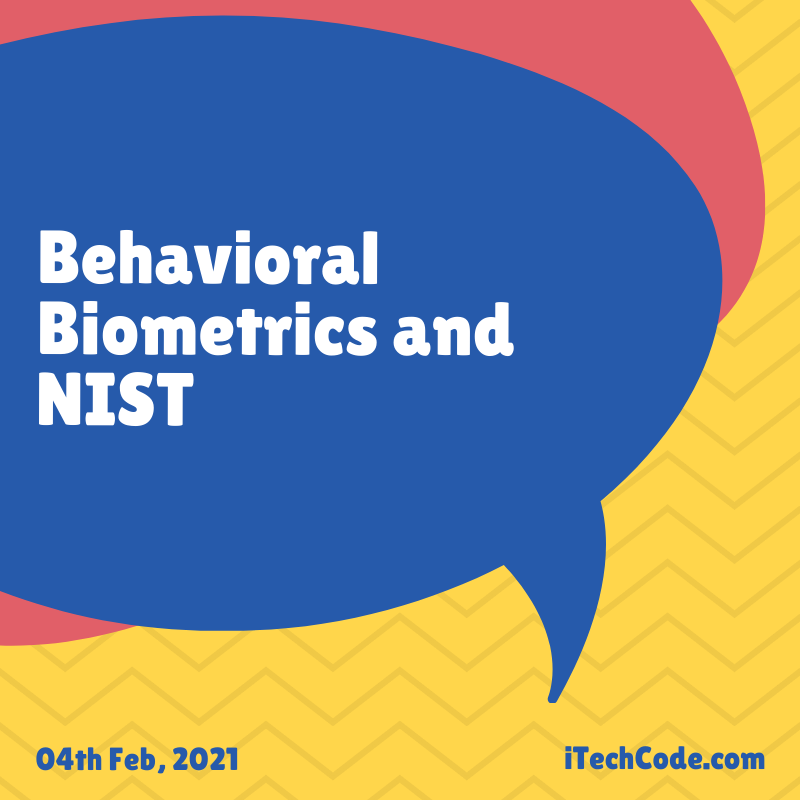The digital age has brought numerous opportunities for businesses to use Information Technology to streamline their operations. However, new risks, including malicious attacks, viruses, and software failure, have accompanied IT’s widespread adoption. If you are looking to boost your company’s cybersecurity but don’t know where to start, you can use proven frameworks like NIST Cybersecurity Framework.
Since the Framework was launched in 2014, it has helped organizations understand, respond, and recover from cybersecurity breaches. NIST released the Framework’s second draft in December 2017, which features two important updates to the Identity Management, Authentication, and Access Control Guidance.
These additions seek to protect digital credentials as they are a goldmine for cybercriminals. Malicious attackers have stolen billions of online identities since 2013 and used them to commit fraud. Organizations can use the best practices on NIST, authentication systems, and behavioral biometric identity proofing to detect and discourage fraud.
The NIST Framework Explained
The National Institute of Standards and Technology, instituted in 1901, is a non-regulatory government agency for encouraging competitiveness and innovation. The agency has released several measurements that support a broad range of technologies used in the US.
NIST collaborated with industry stakeholders to create the Cybersecurity Framework, which was ratified by Congress in 2014. The Framework is used by 30% of US organizations, including recognizable brands like Boeing, JPMorgan Chase, Intel, and Chevron Corporation. It covers five essential areas of cybersecurity: identify, protect, detect, respond, and recover.
Cybercriminals are experts at catching business unexpectedly, and the cost of online attacks to companies is ever-growing. Cyber-attacks result in the loss of about $400 globally every year, and cybersecurity threats are expected to be more prevalent given that there is an attack on a computer linked to the internet every 36 seconds. The best solution to protect your firm from malicious individuals is by investing in your company’s cybersecurity.
Using Behavioral Biometrics To Satisfy NIST Framework Identity Management And Authentication Guidelines
Behavioral biometrics will help your organization fulfill the identity management and authentication guidance included in the Framework’s second draft, under the “Protect” section. Big businesses and small organizations can use behavioral biometrics to install sophisticated identity proofing and authentication solutions to detect fraud and restrict access to various systems.
Integrating Identity Proofing And Behavioral Biometrics
Previously, people used PINS and passwords to confirm their identities on online platforms. The emergence of biometrics meant that individuals could use their faces, fingerprints, or even voices to unlock their devices. Behavioral biometrics is the next frontier in identity identification, where your usual physical movements are used to verify you.
Identity proofing is used by organizations to prevent fraud. Behavioral biometrics will run in the background and study a user’s behavior patterns, including typing speeds, keystroke rhythm, pressure on the screen. The system will restrict access if any behavior differs from that of a verified user. Behavioral biometrics does not interrupt the user experience, and organizations can identify user identities in real-time.
Behavioral biometrics will also help your company fulfill the NIST guideline that “identities are proofed and bound to credentials and asserted in interactions when appropriate.” While you can use database searches to verify user information, you will be putting your userbase’s information at risk of data breaches. Traditional identity proofing methods are no longer adequate if you consider that one in nine of all accounts generated in 2017 was fraudulent.
Enhancing Risk-Based, Multi-Factor Authentication With Behavioral Biometrics
Fraud does not only occur during log-ins but in authenticated sessions as well. The question then becomes: how do organizations provide employees with online data and access to systems and customers with services without creating avenues to cybercriminals? The best solution is enhancing your authentication solutions from being PIN- and password-based to risk-based authentication.
The NIST Framework advocates that “users, devices, and other assets are authenticated commensurate with the risk of the transaction.” Behavioral biometrics provides a platform for continuous authentication to detect any suspicious actions throughout a user’s session.
Traditional authentication systems have become inefficient because they are static and do not determine when a user acts out of the ordinary. On the other hand, behavioral biometrics are incredibly dynamic, and they create a unique identity profile for all users in a system. For example, the system will verify a user based on the angle with which they hold their device and other movements and prevent fraud. Behavioral biometrics can also prompt the user to use facial recognition, fingerprints, or another biometric if suspicious actions are suspected.
The NIST Framework has helped hundreds of organizations upgrade their cybersecurity in the face of growing technological risks. Behavioral biometrics is among the best technologies to prevent fraud, malware, and other cyber-attacks. You can use the technology to secure online transactions and protect employee and customer data.

You can also stay updated by subscribing to iTechCode.